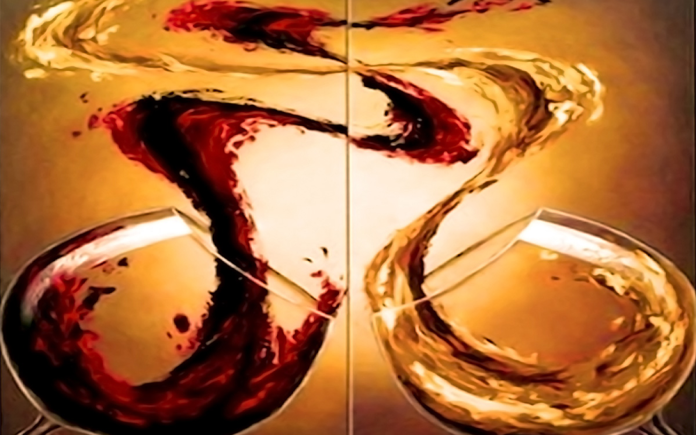
By Rick Riozza
Ever since this column appeared in the first issue of the CV Weekly, we’ve always contended that it’s all about the “game of wine”. Anyone who desires to choose wine intelligently, to consider the wine biz & production gracefully, and to simply enjoy and have fun with the product we’ve chosen for quaffing and for meals, we’re playing the game of wine.
The wine game is always fueled with “what’s trending” or “what’s new on the wine horizon”. Is it all that important to be abreast of foretelling wine news?! You guessed it—doesn’t matter: The game is within you and without you. And how enjoyable is it to open a new bottle of wine and see what it literally brings to the table. Cheers!
A lot of you readers have been in on this game with me for some time now; I thank you for your kind emails and your continued support in reading on a subject that we’d really rather be tasting! What we’ve especially noticed over the 12+years or so of publishing is the coming on-board by the new vino enthusiasts of millennials and centennials.
Millennials are now buying more wine than any other age group, which include the Baby Boomers and those Generation X,Y & Z. And the Centennials—people under 25, currently represent more than 50% of the world population. I guess, that being said, we’re looking to a real game changer sooner than later in the ethos of wine.
We review so many new wines and vintages during the year, and we do so in a fun and colloquial manner. When we wish to sound like wine snobs—take note: we’re playing the irony card in the vast game of wine.
So these are probably the wine topics of the year 2024—Forbes Magazine thinks that’s the case, so let’s consider. The game’s afoot; the mind’s abreast—cheers again!
The wine press has been saying for years that sparkling wines and bubblies will become as popular as our red and white table wines. Consumers are finally embracing the idea that Champagne and other sparkling wines are not only for special occasions and holidays. So we’re expecting to see a lot more of your friends ordering a glass of bubbly or popping a bottle open at home at regular dinners and get-togethers—we don’t need a holiday for sparkling!
And this leads to then next point that we’re all going to be drinking a variety of styles and regions, including Spanish Cava. Italian Franciacorta, Trentodoc, and Prosecco; and California sparkling. Wine bars, restaurants, and shops will also be offering more renditions of “pet nat,” a natural sparkler that can be from any grape and from anywhere wine is made.
Prosecco—you already know about. It’s so popular as an easy sparkler for all ocassions. We especially love to enjoy a brut Prosecco as we prepare any holiday meal. It really makes cooking fun with family and friends.
Italian Franciacorta is really Italy’s Champagne-style wine. If you love French Champagne then one will also love the many Franciacorta available. The big selling point here is that Franciacorta sells for one-fifth the price of comparable French bubbly. Hey—we’ll always be purchasing Champagne, but we’ll know when to take it easy on our pocketbook and simply enjoy fabulous Franciacorta.
Drinking rosé throughout the year has gone from trend to permanent status, and we will see more and more premium offerings entering the market. We’ve been expecting to see luxury competition for pioneers in the space such as Domaine Ott, Château d’Esclans, and Gérard Bertrand for some time, and LVMH’s major investment in Château Minuty earlier this year sealed the deal. Expanded—and pricier, high-end rosé selections are on their way to our wine shelves and to the restaurant near you.
As Dry January, Sober October, “Mindful Drinking,” and just the idea of drinking less persist in their upward climb, “no” and “low alcohol” wine will continue to grow as well. Our culture is now easily moving in the direction that many people stop drinking temporarily for numerous reasons that include pregnancy, medication regimes, herb desires, or training for the Olympics. Of course, they still want to enjoy the social aspect of having a glass of wine with friends. Although at the onset the category was flooded with low quality de-alcoholized bulk wine, we are seeing a growth in single-vineyard offerings from well-known regions.
Forbes Magazine warns us that: “The future of the wine industry is in peril due to rising summer temperatures and unstable weather patterns, and many producers are taking it upon themselves to sound the alarm and become change-makers. Expect to see an increase in the number of back labels talking about sustainability, low water utilization, and regenerative farming.
And don’t be surprised when even top icon wines start using lighter-weight bottles to reduce the impact of freight shipping and material usage. Younger wine drinkers are driving the movement toward transparency on this front.
Finally, when you begin to see the term “Co-ferment” on a wine label, be aware of the new brave world of wine right before you. Actually, co-fermenting red and white grapes is a technique that has been used for centuries, most notably in the Côte Rôtie appellation of the Northern Rhône. There, small quantities of Viognier are fermented with Syrah adding the signature aromatic lift to these highly sought-after wines.
What used to be a niche tradition is now a method embraced by producers around the world. Santa Barbara’s Stolpman Vineyards, which makes its Crunchy Rôastie bottling as a carbonic co-ferment of Syrah and Viognier.
So the buzz is that more and more wine is now being crafted by fermenting different grape varieties together, or, a more experimental fruit wine made with a combination of grapes, apples, blueberries, or whatever soothes one’s fancy. Cheers to game!












































